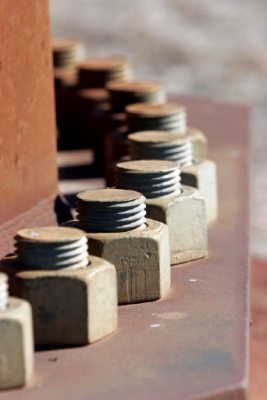Anti-seize pastes are a class of specialty lubricants that contain synergistic combinations of lubricating solids in base oils. High solids content makes these pastes far different than conventional greases, which are formulated with little or no solid lubricants. They are especially suited for severe-duty applications involving high loads, harsh environments, extreme heat, or low sliding speeds or oscillatory movements.

Typical grease is essentially a lubricating fluid, containing 65 to 95% base oil, 5 to 35% thickeners and up to about 10% special-purpose additives, including some solids. In contrast, a paste will usually have only 40 to 60% base oil that is thickened into a greaselike consistency with 40 to 60% solid lubricants. Pastes are a convenient form for easy application of solid lubricants, which are needed in challenging conditions. Even if the carrier oil is squeezed out under load or driven off by high temperatures, the solids maintain a strong lubricating film.
Paste ingredients go beyond greases
In a typical anti-seize paste, different solid lubricants are used alone or in combinations as the surface-active materials needed for effective boundary lubrication in a tribological system. Different base oils are used as wetting agents and carrier fluids for the solids. Some of the formulation choices are:
- Solid lubricants: Molybdenum disulfide (MoS2); graphite; polytetrafluoroethylene (PTFE); calcium hydroxide; metal phosphates; inorganic oxides; and various metals, like copper, tin, lead, zinc, aluminum and nickel.
- Base oils: Mineral oils or synthetic oils, including polyalphaolefins (PAO), polyalkylene glycols (PAG), diesters (DE), polyolesters (POE), silicones and perfluoropolyethers (PFPE).
Types of anti-seize pastes
Different ways are used to classify paste types, including color (black pastes, white pastes), composition (MoS2, metal, metal-free), specialty form (grease pastes, oil pastes), or application (assembly pastes, thread pastes). Several types of pastes are summarized here.
- Black pastes are mainly composed of MoS2 and graphite. They are used as assembly pastes to help prevent galling and cold welding and to aid in future disassembly.
- White pastes, also used as assembly pastes, have metal phosphates and hydroxides as solid lubricants and are particularly good at helping to prevent fretting corrosion caused by micro-vibrations of machine components.
- Metal pastes are often used as anti-seize pastes on threaded connections and can contain various metal powders with other solid lubricants. They help ensure proper tightening torque.
- Grease pastes typically provide thick-film, long-term lubrication with about 25% solid lubricants in oil with small amounts of thickeners for added consistency.
- Oil pastes have a reduced amount of solid lubricants – 10 to 20%, for example – with the balance predominantly oil. These oil pastes are often good for long-term lubrication and can provide additional corrosion protection.
- Metal-free pastes typically use forms of inorganic oxides like zirconium as the solid lubricants. These eco-friendly pastes are most commonly used when high temperatures exist and where solder embrittlement and stress-corrosion cracking can be factors.
Solid lubricants make a difference
Anti-seize pastes have several key advantages over conventional greases:
- As temperatures and pressures increase or decrease, boundary films formed by solid lubricants maintain steady thickness.
- Solid lubricants resist water washout and are not subject to evaporation; oxidation temperatures exceed 399°C (750°F).
- Relative surface speeds are not required to form effective lubricating films, and loads have little or no effect on film thickness.